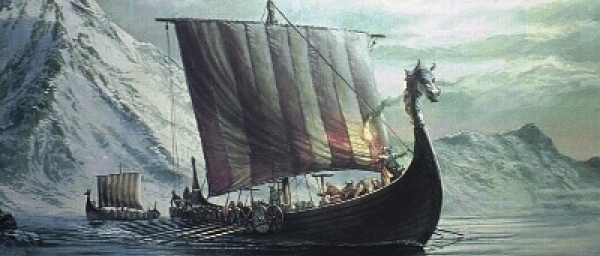The Vikings: Storm from the North
Posted on 18th April 2021
On 8 June 793, Viking Longships appeared off the coast of north-east England their destination the Holy Island of Lindisfarne. It seems unlikely they would have stumbled across one of the richest and by way of its isolation most vulnerable sites in Europe by accident for it had been a centre of Christian worship since AD 634. More likely they had traded with them in the past and seeing the riches they possessed had simply come to take it for themselves. The monks who inhabited the Island in quiet contemplation and prayer could not have imagined what was about to befall them.
In just a few hours of savage violence the Vikings, or Norsemen as they were also known, pillaged and destroyed the monastery and laid waste to the Island. Those monks who tried to resist were either cut to pieces or drowned in the sea while the younger ones who did not flee in time were dragged from their hiding places and raped before being taken off into slavery.
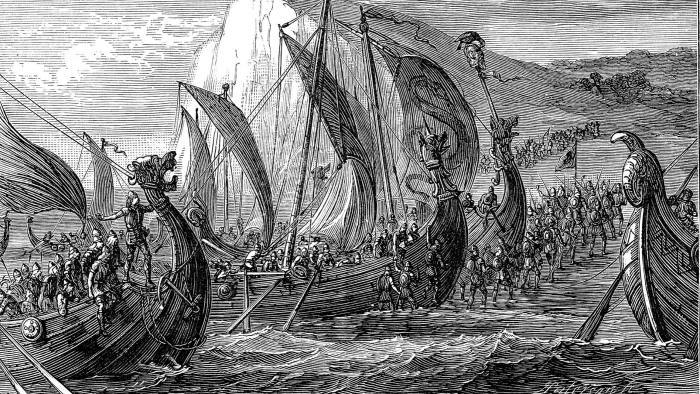
The Viking haul at Lindisfarne was huge as they carried away jewels, gold crosses, silver plate and even the holy relics that as non-believers were valueless and meant nothing to them. They were only disappointed there wasn’t room for the livestock which they slaughtered anyway. The few things they could not take with them they set fire to.
The raid and the extreme ferocity with which it was carried out sent shock waves across Europe. The scholar Alcuin resident in the Court of Charlemagne and so no witness to events nonetheless expressed the sense of horror: “Never before has such terror appeared in the land of Britain as we have now suffered from a pagan race. The heathens poured out the blood of saints around the altar, and trampled on the body of saints in the temple of God, like dung in the streets”. Holy places were supposed to be sacrosanct and were rarely fortified as to attack them was a crime against God, but then the Vikings weren't Christian they were Pagan.
The attack on the Holy Island of Lindisfarne was the first significant Viking raid on the British Isles but it was certainly not to be their last as over the next three centuries the Vikings would return again and again to murder, rob and destroy but also to colonise and to settle. Indeed, the Viking presence would culminate in the reign of Cnut, or Canute, the first Norse King of England.
The ferocious reputation of the Vikings is well-deserved and despite attempts in recent years to focus on other aspects their expertise as craftsmen and artisans and their extraordinary seamanship and navigational skills the truth is their legacy of rape, murder and plunder goes before them. But were the Vikings as a people ferocious by nature or merely adapting to the circumstances in which they lived?
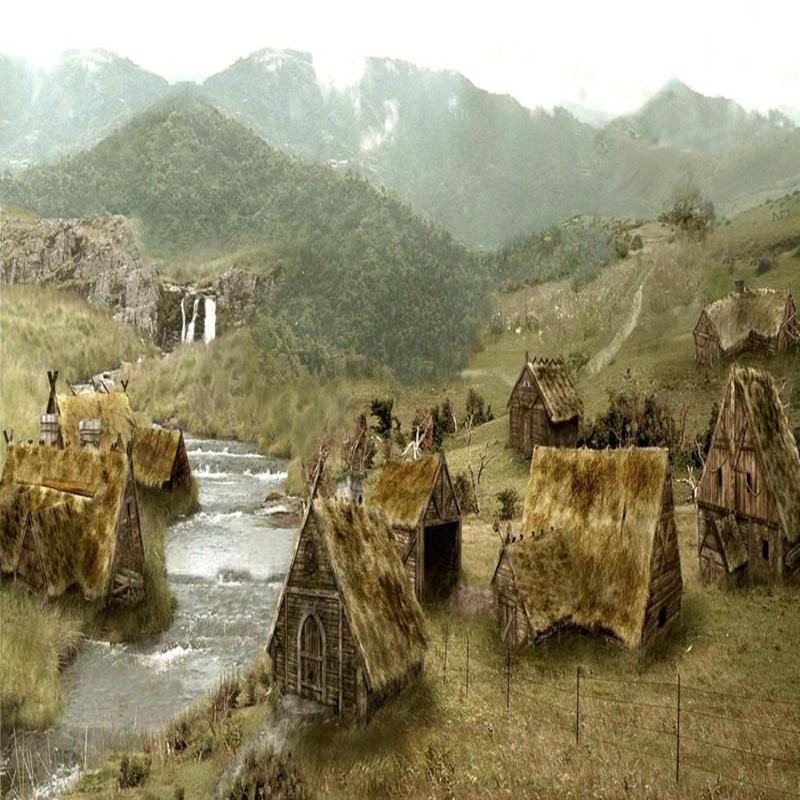
The Vikings or Norsemen emerged from the area around the North Baltic Shore most notably in Denmark and Norway. It is difficult to know why they took to raiding but food was always scarce in the often-harsh Scandinavian environment and as a seafaring people they had long been great traders reaching as far East as Russia and the land of the Turks, and as far West as the as yet unexplored North American Continent.
The scarcity of food meant that the Vikings were notoriously frugal, and nothing went to waste. Fish formed the major part of their diet and any that wasn't eaten was preserved in salt water for future consumption. Likewise, the remains of any meat would be made into a stew that was expected to last for days. They also ate an early form of the sandwich - thick slices of bread topped with slabs of meat and sweetened with honey. While there they washed down with buttermilk or a strong honey-based mead. Indeed, they were also prodigious drinkers, and it was considered almost indecent for a Viking man to be sober for long periods of the day. They were also a sociable people who enjoyed each other’s company with the Viking calendar was dominated by three major celebrations: The Sigrblot took place in late spring and marked the coming of the warm season; the Vetrarblot celebrated the successful gathering of the harvest while the Jolablot was a mid-winter festival that seems to have taken place because it would otherwise have been too long without one. Each festival would consist of a daily feast where the entire village would gather, and they could last up to two weeks. Times of great celebration they would often end in violence, but they remained cherished nonetheless.
Also, a Pagan people at a time when Christianity was sweeping across Europe they worshipped the God's of Norse mythology. Also, a Pagan people at a time when Christianity was sweeping across Europe they worshipped the God's of Norse mythology.
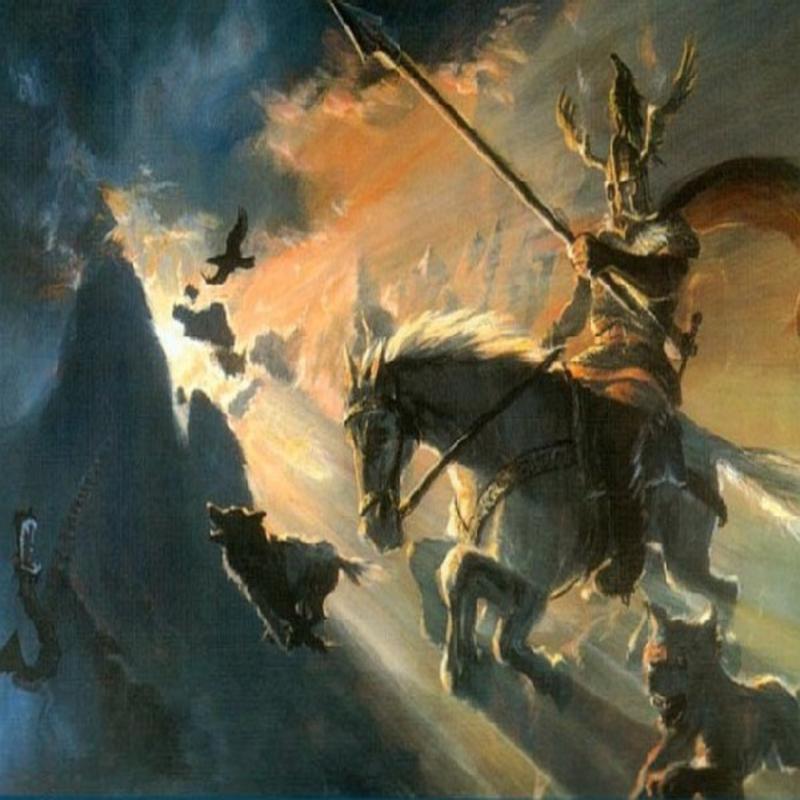
The Chief God was Odin whom it was said roamed the earth in human form seducing women and raping those he could not with Viking men eager to trace their ancestry back to Odin; and as a fierce and unforgiving God was it not right and proper that his children should be also.
Thor was a blacksmith and the God of War who killed to impose his will and killed to enforce the law. He expressed his anger by smashing hard his hammer down upon his anvil and lighting would flash across the sky and the earth would tremble.
Loki was the dreamer of dreams and the wizard of deceit.
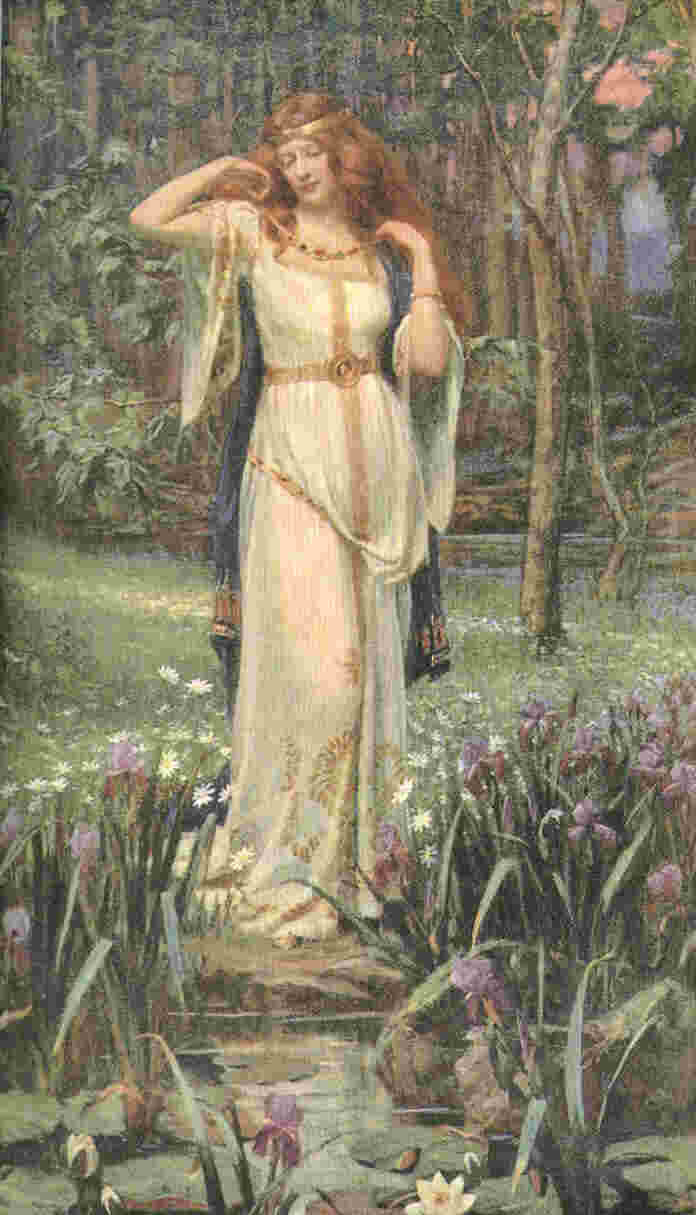
Frey was the fertility God, Freya the Goddess of Sex and Idun that of Eternal Youth. Hel was the monstrous Goddess while Sif the wife of Thor spent all of her time combing her long golden hair.
Unlike many other polytheistic societies where the Gods were distant Viking pagan belief was the cornerstone of their existence. The Gods were not to be worshipped from afar they were central to how they lived their lives and how they perceived themselves. They dwelt in Asgard, a place far away from the world of mere mortals but one connected to it by a rainbow called the Bifrost and it was believed that the God’s would one day fight a great battle, the Ragnarok, against evil spirits in the guise of giants and it is perhaps an indication of Norse fatalism that it was one they were prophesied to lose but then to die bravely and nobly in battle was the greatest honour with the fortunate warrior being carried by angels known as the Valkyrie to Valhalla to fight alongside Odin in the forthcoming apocalypse. For a Viking it seems that simply dying wasn’t enough.
Great warriors and leaders could expect a traditional Viking funeral aboard a Longship towed out to sea where it would be set alight with your most prized possessions, your sword, your armour, your jewels and sometimes even your slaves. Often however the funerary rites would be enacted on land within a mound of stones in the shape of a Longship.
Less esteemed Viking warriors would simply be interred in the ground amid scenes of great trepidation for though they may not have feared dying in battle they feared greatly not doing so. Death was meant to be heroic and if it could not be achieved at the hands of an enemy then it must be in an orgy of drinking and eating or at the moment of coitus. To merely die was what women and slaves did.
Prior to their conversion to Christianity the Vikings maintained no written records and their history was an oral one passed down from generation to generation by Skalds or Bards. The great Norse sagas were recited ad nauseum as education, as entertainment and as a warning and though they were later collected and written down many have been lost to history. This was despite the Vikings having a written language as is evidenced by the many rune-stones still to be found which have since been deciphered and translated.
Viking society was masculine and patriarchal and one in which women had no formal role, they were expected to be subservient, and they were, but they remained formidable nonetheless. With most of the men away from the village for long periods of time it was the women who tended the crops, ran the dairy, kept the many slaves in line and raised the children.
The young boys of the village who would become the Viking warriors of the future with so many absent fathers were subject to female influence and it can rightly be said that it was the women of the village who imbued these young boys with their sense of adventure, their ruthless character and their warrior spirit.
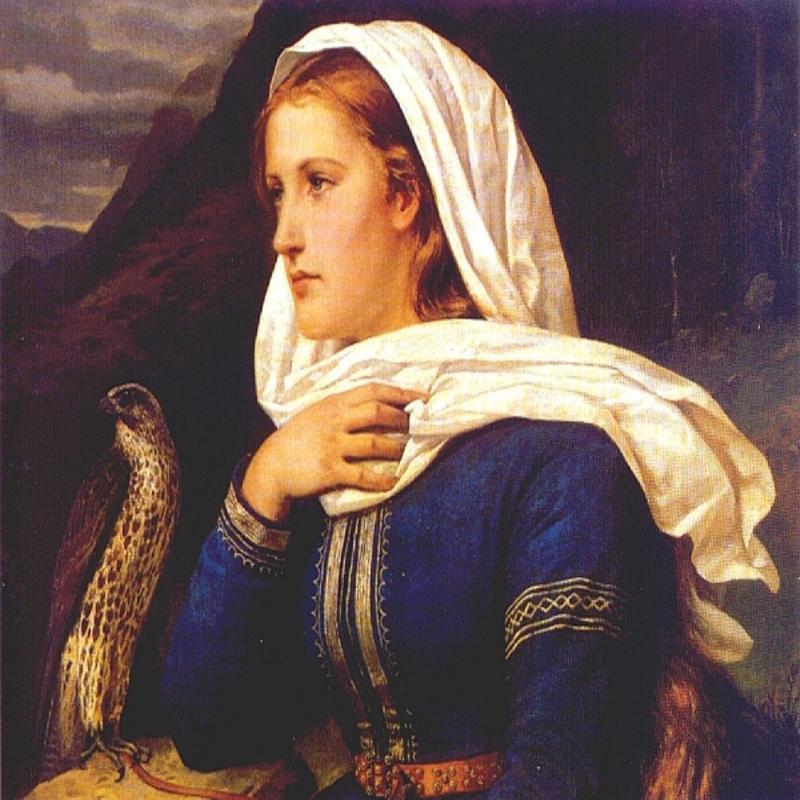
Viking women were strikingly tall for the time and physically strong and though to have blonde hair and blue eyes was the most cherished look many in fact had dark hair and brown eyes, but all were marked out by their very pale and almost flawless complexion. They also often dressed very much as the men did with dresses and shawls being kept for special occasions or merely being thrown over their male attire to please their men folk upon their return.
The women of the slave class wore old clothes that had been discarded by the men and were forced to eat a broth with thick bran-laden bread which was no doubt filling if not exactly appetising; women of the yeoman class, or the majority, wore trousers or a long heavy dress over trousers and a cap. She would tie a kerchief around her neck and often adorn her shoulders with brooches. Her staple diet would be one of fish and stew and perhaps meat when she could get it.
Those of noble birth wore a blouse of smooth linen and a skirt that spread outwards with a light bodice. She would also wear a great deal of jewellery, particularly bracelets, and sometimes a bejewelled headdress that denoted her status. She ate only the best poultry and meat.
Though they are often portrayed in Viking iconography weaving the women of any Viking village would spend most of their time cooking and preparing food.
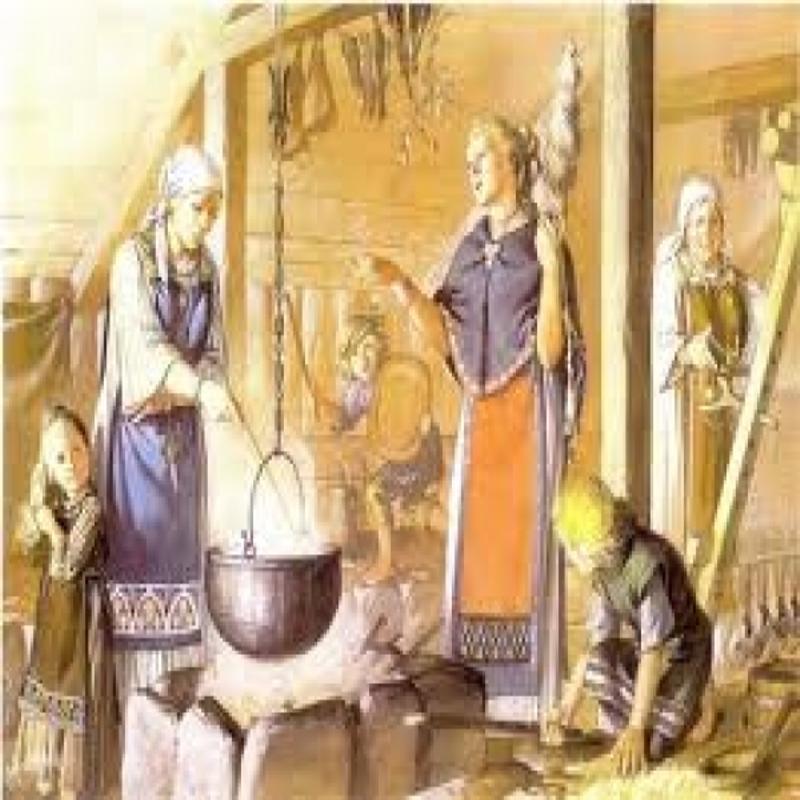
A typical Viking home would be a one room wooden hut with a hole in its roof to rid it of the effects of the hot food and drink being constantly prepared. Even so, it was a permanently smoky environment but at least a warm one.
As well as being farmers, traders, colonisers and ferocious warriors the Vikings were as we have seen also great seafarers. It is believed that the first European to set foot upon the North America shore was Leif Ericsson some 500 years before the exploits of Amerigo Vespucci and Christopher Columbus and his means of transport would have been the Longship, a narrow wooden light bottom craft designed for speed and flexibility and with a shallow draught ideal for rivers and beaching. Though it had a central sail its main means of propulsion were the crew themselves and with oars the entire length of the ship it could reach a speed up to 15 knots. It was also pared down for the sake of efficiency and there was no cover aboard so the crew would have been exposed to the elements at all times, while its shallow draught allowed for swift disembarkation so that they could be upon a village within minutes of being sighted offshore.
A Viking Raid was not merely intended to rob but also to strike fear into its victims thereby making them more compliant in the future. So their Longships would often have blood red sails and be adorned with a fearsome dragon’s head frontispiece.
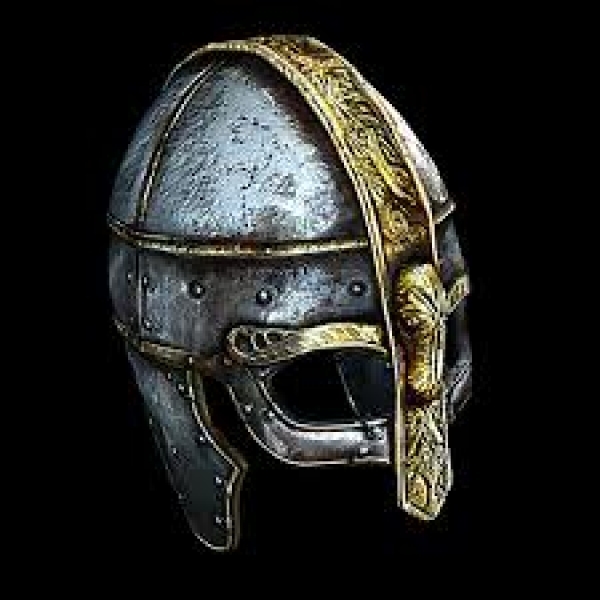
The warriors would be dressed in loose fitting clothing for easy movement and contrary to popular belief they did not wear horned helmets, but rather leather caps reinforced with steel strips. Only a Viking of high status would have an entirely steel helmet. They would be armed with swords, round wooden shields and small hatchets designed for throwing. The elite of any Viking force were the axe wielding Beserkers who were the tallest, the strongest and the bravest men they had.
Viking tactics were simple – to attack with great ferocity and have done with it. The destruction then would be great and the bloodshed unrelenting, but they also ensured they left behind victims either mutilated or blinded as a warning to others. Both men and women were routinely raped but again this was for reasons of intimidation rather than sexual gratification while what could not be carried away was destroyed and what could be burned was set alight.
The ferocity of the Vikings was reflected in the names given them, often by their enemies. For example, Thorfinn Skullsplitter who pedalled his particular brand of terror in the Orkney Islands or Eric Bloodaxe who established the independent Kingdom of Northumbria. Yet despite his fearsome reputation Eric Bloodaxe was known to have been a hen-pecked husband who lived in abject terror of his even more formidable wife Gunnhild called by those who knew her the Evil Witch, though never to her face.
Eric Bloodaxe was one of Harald Finehair, King of Norway's twenty sons and he only succeeded to the throne himself by killing most of them. His rule was brutal and unpopular so when his one remaining brother Hakon returned to Norway to lay claim to the throne Eric was quick to flee. He ended up in England where he connived with the Saxon King Athelstan to secure Northumbria for himself. He had learned nothing from his time as King of Norway however, and behaved just as brutally as he had before and was similarly forced to flee on numerous occasions always to return like the proverbial bad penny he was. In 954, he was killed in battle to much rejoicing.
England had by this time, along with Ireland become the Vikings favourite hunting ground and subject to constant raids. When Olav Haraldsson, the future Christian King of Norway along with Thorkell the Tall sailed up the River Thames the whole south-east of England was thrown into panic. Thwarted in his attempt to take London he went onto ravage Oxford and pillage Canterbury destroying much of the surrounding countryside as he went. In the end King Ethelred paid him 4,800 pounds of silver just to go away but the more the English paid this Danegeld, or blood money, the more often the Norsemen returned and gradually over time the Vikings occupied much of the country.
The Saxons, divided and regularly defeated in battle had no answer and in January 1017 the Saxon Ruling Council, the Thegn, elected the Viking Cnut, King. The Norse conquest of England was complete, but it was to be short-lived. On 12 November 1035, Canute died to be succeeded by his squabbling sons Harthacnut and Harald Harefoot. The younger brother Harefoot was appointed Regent of England whilst the rightful heir Harthacnut pursued his claims elsewhere in Scandinavia. But in his brother’s absence Harefoot effectively usurped the throne.
When he died on 17 March 1040 during a heavy bout of drinking, a fitting Viking exit if ever there was one, Harthacnut returned and had his brother’s body disinterred, beheaded and thrown into the River Thames. But his reign too was short and following his death in 1042 the Thegn elected the Saxon heir to the throne Edward the Confessor then exiled abroad their King. The Viking dominance of England had come to an end but their interference in its affairs had not.
Edward the Confessor remained childless and as such there was no obvious successor to the throne. The most powerful family in England were the Godwinesons whom Edward hated and certainly did not want to elevate to Kingship. He particularly loathed the brutal father, the Earl Godwiner whom he had held responsible for the blinding and murder of his brother many years before but since the old Earl’s death he had become reliant upon his sons for the administration of his Kingdom, in particular the eldest, Harold.
In 1065, Harold was forced to intervene in a dispute over tax between the Earls of Northumbria and his younger brother Tostig. Harold aware that his hot-headed younger brother’s behaviour was threatening rebellion chastised him before making the decision to side with the Earls and remove him from his position of power. Tostig was furious that Harold had opposed him, his own brother, something he considered the greatest of betrayals. He fled England berating Harold as he did so and vowing to return - when he did it would be with Viking support.
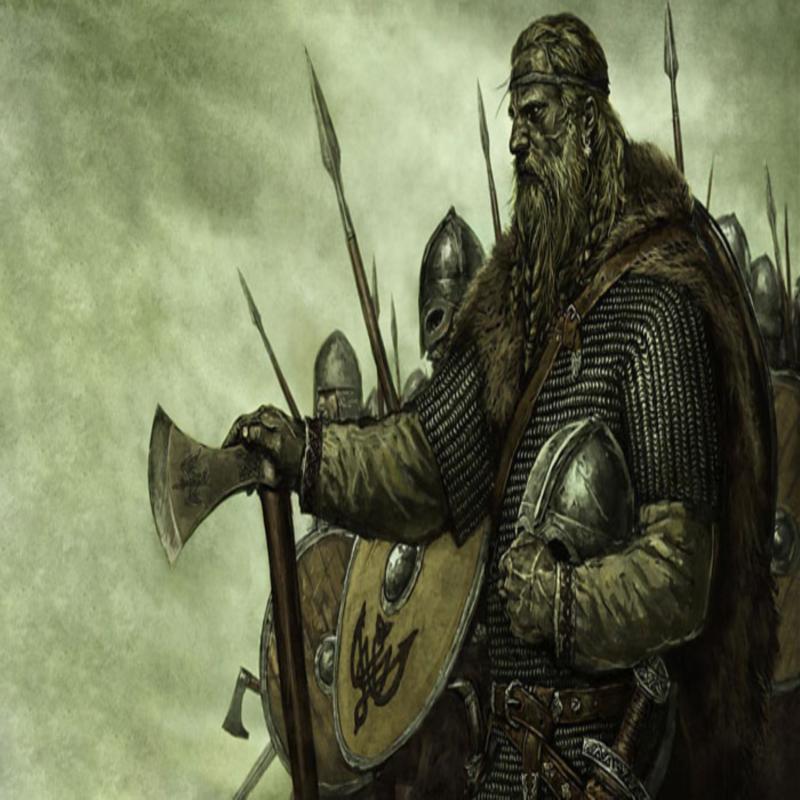
Harald Hadrada was a figure of some renown, an axe wielding giant of a man with a reputation so ferocious that the mere mention of his name struck terror into the hearts of those who heard it.
He had fled his home country of Norway following an attempt by his half-brother Olaf to seize the throne taking 500 warriors with him. With his own private army, he travelled around Europe offering his services as a mercenary for hire and was to serve in the army of the Russian Tsar and as part of the Byzantine Emperors elite Scandinavian Vagarian Guard.
In 1047, he at last succeeded to the throne of Norway and spent the next fifteen years unsuccessfully trying to conquer Denmark. The extra money he demanded in taxation to fight his wars made him hugely unpopular, but he dealt harshly with any opposition preferring to maim as an example to others rather than kill.
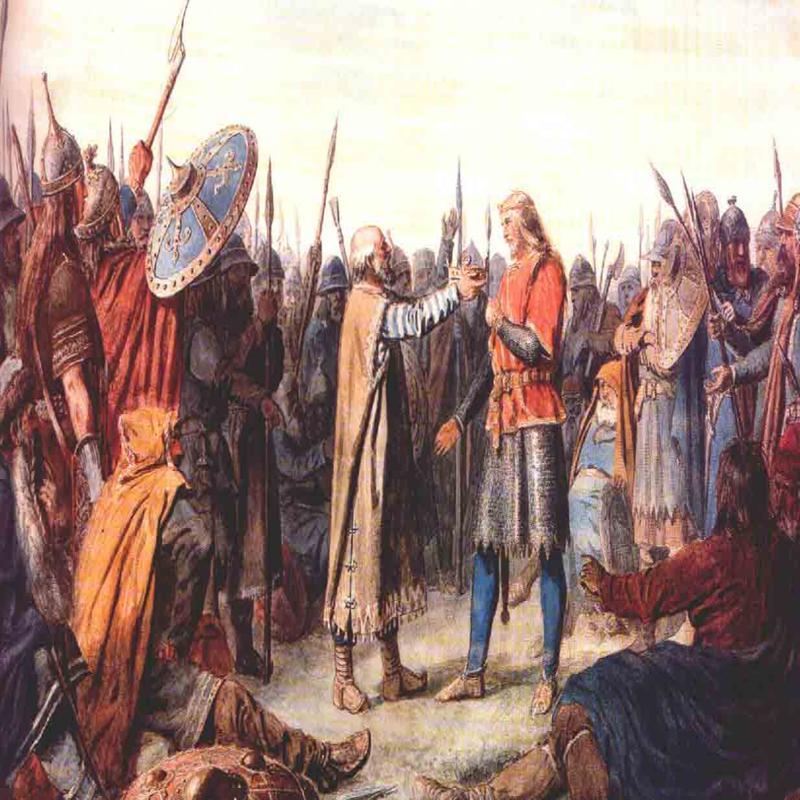
Tostig who had been trying to recruit Hadrada to his cause at last succeeded and in September 1066, they landed together on the northern coast of England with an army of 15,000 men and a few days later on 20 September they defeated the combined armies of Earl Morcar of Northumbria and Earl Edwin of Mercia at the Battle of Fulford. But it was not the decisive victory they had at first thought. The following day, Harold arrived with his army ho he had forced march from London and Tostig and Hadrada were taken totally by surprise.
They had left much of their army at York and the men they had with them were unprepared for battle. Tostig, who knew his brother and feared his courage and military prowess wanted to withdraw but Hadrada mocking him for his cowardice, refused.
Just prior to the battle a man rode up to Tostig and offered him his Earldom back if he would surrender. When Tostig asked what Hadrada could be expected to receive he was told, ”seven feet of good earth as he is taller than other men.” Hadrada was impressed with the courage of this man and asked who he was? Tostig replied, "that man is my brother, Harold.”
He then begged Hadrada to send for reinforcements from York which he did but they were to arrive too late to influence the outcome of the battle which was to be a massacre that barely any of the Viking army survived.
Hadrada, wielding his great battleaxe and surrounded by his Berserkers, fought to the bitter end before finally being cut down by an arrow to the throat. Tostig also died in the fighting.
It could be said that with the death of Hadrada and the destruction of his army at Stamford Bridge the age of the Viking had come to an end.
Tagged as: Ancient & Medieval
Share this post:





